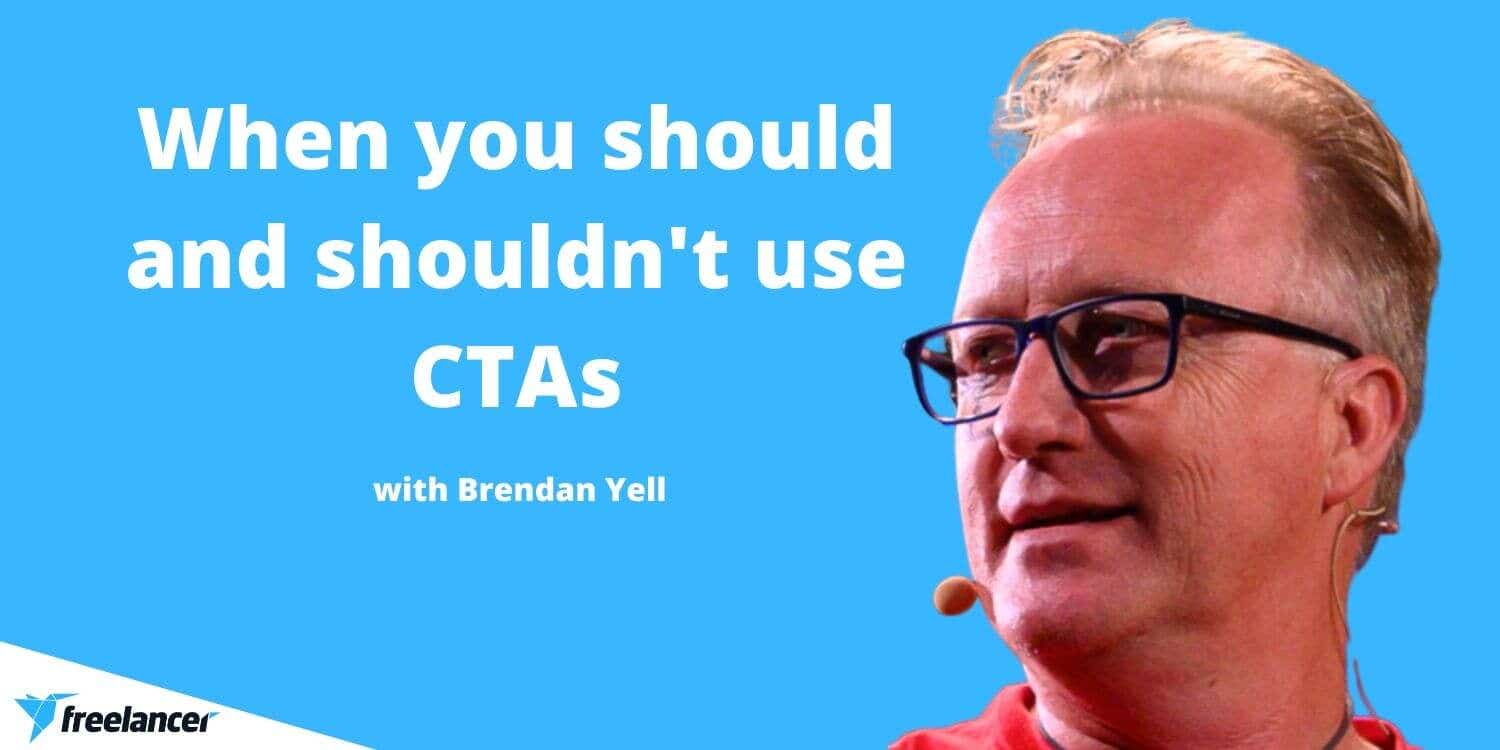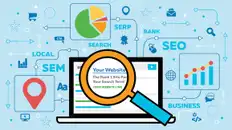Chat with Ava - Your AI Business Consultant
Hi I'm Ava, your AI guide to supercharging your business!
Whether you're already running a business or dreaming of starting one, I'm here to help turn your vision into reality using AI powered freelancers. Share your business goals, and together, we'll create a project that our talented freelancers can bid on. Let's make your vision a reality!
I have a business
I'm starting a business
Something went wrong while sending the conversation to your email. Please try again later.
You can only save your conversation once per hour. Please try again later.
Your conversation is too short. Keep chatting with Ava to enable saving.
How to create SEM landing pages that convert
If you're doing PPC marketing, your landing page is as important as your ad. We'll show you how to get the most out of your SEM landing pages
Jan 21, 2020 • 6 minute read

Professional Digital Marketing Agency
Copy to clipboard failed, please try again after adjusting your permissions.
Copied to clipboard.

In search engine marketing, your landing page is just as important as your ad
Landing pages are a central part of any successful online marketing campaign. It's essential to have a central avenue to direct your marketing traffic to convert them into sales.
But not all landing pages are created equal. There are different types of landing pages for different purposes. And, just creating a generalized landing page for all your SEM campaigns can negatively impact your conversion rates.
It's important to consider the differences between Search Engine Optimization (SEO) and Search Engine Marketing (SEM) while designing your landing page. For most businesses, Search Engine Marketing is the optimal option because they're looking to drive traffic onto their landing pages from search engines. That is why it's a much better idea to create SEM landing pages.
Before we dig deeper into that, it's important to consider the following important question.
Before we dig deeper into that, it's important to consider the following important question.
What is a landing page?
A landing page is a web page you drive traffic to from a search result or a paid ad. A landing page could just be your home page, or it could be a page designed specifically for sales. Or, as we'll find out, it could be a page designed specifically for the keywords your ad is targeting.
Effective search engine marketing is practically impossible without having a properly optimized SEM landing page. A lot of thought and attention goes into creating the perfect SEM landing page.
Creating the perfect SEM landing page
While creating the landing page, it's extremely important to have a well-defined goal in mind. In most cases, the goal is to create a page that's optimized for either gathering leads or converting sales from the traffic that's being channeled to the landing page from search engines.
To achieve this goal, you need to take into consideration the goals of the user before entering the site. A great way to evaluate that is by taking into consideration the keywords and searches that lead people to your website.
Keywords
Keywords are arguably the most important part of optimizing your landing page for SEM. Whether you are relying on Google Adwords or any other search engine to direct traffic towards your landing, it is extremely important to tie in your keyword to your landing page.
You need to put thought into the intent behind the keywords as well. If your SEM campaign is for transactional searches such as "buy shoes" or "hire a digital marketing agency," it's likely that you'll be drawing in people with high purchasing intent. In these cases, your landing pages can cut to the chase and explain the benefits of your product or service compared to your competitors'. Your visitors already want to purchase. You just have to convince them to purchase from you.
But, if the keywords you're targeting are more informational, such as "how to market my business" or "what are the best shoes for running," your landing page visitors are likely to be lower intent. The landing page you design for these keywords should focus more on guiding the visitor to the point that they're ready to purchase. For low intent keywords, you might even focus more on gathering leads than actually converting visitors into customers.
Copy
The copy on your landing page is integral to telling the story of your product. It is extremely important to convey the maximum possible information in the least possible words.
People are not coming to your landing page to read a story. They're there to be drawn to the product and make a purchase, or to find out more about why they might need a product or service. Make sure that every word counts. Focus on the copy that goes into the descriptions and headlines and ensure that you tie the copy in well to the keyword that the visitor is originating from. This helps you maximize client interaction on your SEM landing page.
People are not coming to your landing page to read a story. They're there to be drawn to the product and make a purchase, or to find out more about why they might need a product or service. Make sure that every word counts. Focus on the copy that goes into the descriptions and headlines and ensure that you tie the copy in well to the keyword that the visitor is originating from. This helps you maximize client interaction on your SEM landing page.
Aside from these considerations, it's also extremely important to have the right design to maximize the conversions on the landing page.
Design considerations
While designing your SEM oriented Landing Page, you need a thorough understanding of user expectations on entering the page. The general design of the page should reflect the keywords that were used to reach the landing page, and the searcher's intent.
A great way to do that is to utilize the keywords in a visual form within the website imagery. For example, if the user is visiting your landing page on the “shoe” keyword, it seems pretty obvious they'll be expecting to see imagery of shoes prominently displayed. This helps the user have a great idea of the overall contents of the landing page and to reduce the bounce rate.
A great way to do that is to utilize the keywords in a visual form within the website imagery. For example, if the user is visiting your landing page on the “shoe” keyword, it seems pretty obvious they'll be expecting to see imagery of shoes prominently displayed. This helps the user have a great idea of the overall contents of the landing page and to reduce the bounce rate.
It is also extremely important to keep the landing page really focused on the product/information you’re trying to push. Due to the short attention spans of modern-day visitors, keeping the contents focused is mandatory to reduce the bounce rate. The design of your landing page needs to grab attention the moment visitors land on it, whether or not they scroll down the page. That means you need a strong hero image.
A major element of the design will be where you place your call to action, or CTA.
Call to Action
Even though the Call to Action seems to be a very minor element, it's one of the most important aspects of having a great SEM landing page. The right CTA can have a massive impact on your conversion rate.
To have an effective CTA, it's important to consider the following details:
You should also consider which CTA to use for which SEM campaigns. As we mentioned before, campaigns focusing on high purchasing intent keywords can easily use CTAs like "Buy Now," "Add To Cart" or "Join Now." If you're targeting lower intent keywords, you might want to use a lower commitment CTA like "Learn More" or "Get A Free Quote."
Remember, the CTA is the eventual action you’re pushing for. It's essential to make it as magnetic as possible to get users to click on it.
A great example of a well designed CTA is the “Join Free For A Month” CTA used by Netflix to get people to interact with their content.

This CTA (the red button) is a great example, because it provides a simple, compelling case to the users. Here is a breakdown of the elements of the CTA that act together to make a strong case for the user to take the action.
Use talented professionals to help with your SEM landing page
Using the right creative professionals can be a great way to improve your SEM design and copy to reflect professional standards and convert your page into one that stands out. By getting a professional designer to help you in the endeavor, you are effectively multiplying your odds of converting your customers. Copywriters can also be extremely helpful in writing captivating content that has the highest odds of conversion.
Since full-time employees can be an expensive hire, going for freelance designers and writers is a great way to save on the costs and get multiple options when it comes to quality. This is a really effective way to have an effective design and copy without having to bear the expenses of a full-time employee.
Tell us what you need done
Enter your project name
Related Stories
Talk to one of our Technical Co-Pilots to help with your project
Recommended Articles Just for You

Bring visitors to your site, turn them into leads and turn those leads into paying, loyal customers by building your sales funnel
7 min read

Getting people to your website is one thing. Getting them to convert into customers is quite another. Learn how to turn your site into a sales machine
7 min read

A compelling CTA is key to earning revenue but maybe you're overdoing it. We spoke to Brendan Yell from Twilio to learn the correct CTA methodology
3 min read

Learn the complete end-to-end process of building a successful website for your business in our comprehensive guide
19 min read
Thanks! We’ve emailed you a link to claim your free credit.
Something went wrong while sending your email. Please try again.
Loading preview
Permission granted for Geolocation.
Your login session has expired and you have been logged out. Please log in again.




